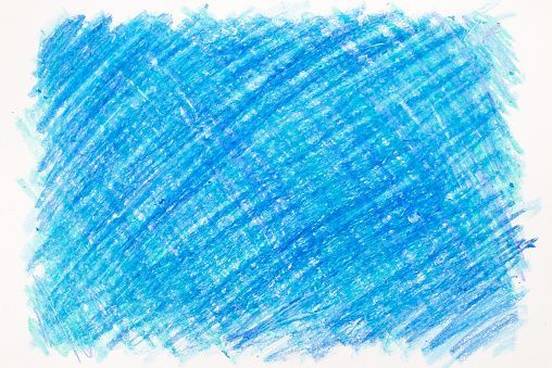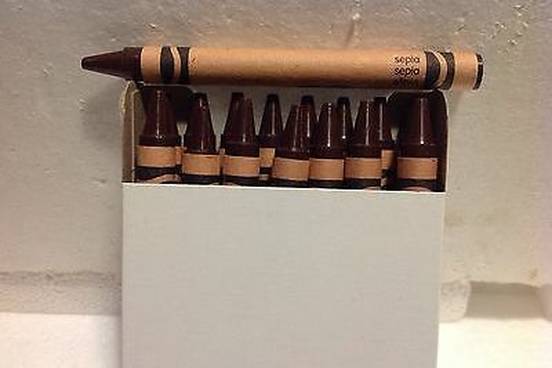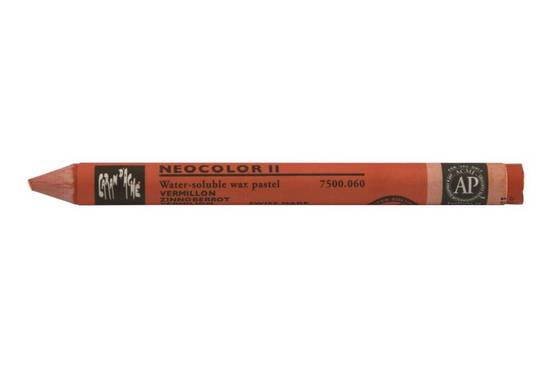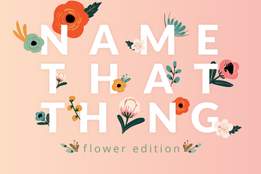Vermilion is a shade of bright reddish orange. The pigment known as vermillion contains mercuric sulfide.
After the funeral, Leigh begins to see her mother as a bright vermillion bird who leaves her red feathers as clues and urges her to go to Taiwan.
— Shana E. Hadi, The Stanford Daily, 22 Nov. 2019
In vermilion one can find the Latin word for “worm,” which is vermis. The noun vermiculus referred to an insect larva, as well as a bright red color obtained from kermes, made from the crushed dried bodies of a certain insect found on a Mediterranean oak.

Cerulean
Cerulean describes the particular blue you see in the sky on a clear day. The Latin caeruleus, which means "dark blue," most likely derives from caelum, the Latin word for "sky.”
The Duchess of Sussex stepped out in a lovely cerulean shade dress with cap sleeves. The color was bright and bold, as if to announce: "I'm back, and I'm feeling great!"
— Marina Liao, Marie Claire, 5 Mar. 2020
Another adjective often used for the color of the sky is azure, which ultimately comes from a Persian word for lapis lazuli, a rich blue stone.

Khaki
We think of khaki as the yellowish-brown fabric of office casual pants or cargo shorts. With a name coming from the Hindi word for “dust-colored, brown,” khaki was used in the uniforms of the British Indian Army in the 19th century, preferred both for reasons of camouflage and the fact that they didn’t show dirt.
Khaki can also be used in English for the yellowish-brown color itself, and while it is still mostly applied to fabric and dress, it is found occasionally in descriptions of other earth-toned things:
Meanwhile, to my left, the lush meadows of Mayo's interior had given way to an empty, khaki-colored expanse of bog.
— Megan Harlan, The New York Times, 8 July 2001

Fuchsia
The bright color known as fuchsia is midway between purple and pink and shares its name with a genus of decorative shrubs of the evening-primrose family having flowers in that shade.
Even so, Carolina stands out from the group, which tends to be conservative in appearance and conduct. She wears a lot of mascara and eyeliner, a diamond stud below the left corner of her mouth; her long nails are fuchsia.
— Ted Conover, Harper’s Magazine, May 2013
Fuchsia might be the most popular color that ultimately owes its name to a person. That person is the 16th-century German botanist and physician Leonhard Fuchs, known for his woodcut drawings of plants and herbs. The genus fuchsia was named as an homage to his work.

Chartreuse
Chartreuse is a light variable color between yellow and green.
The watershed garden, which was finished in December, is still taking root and at the moment, features more foliage than flowers. In the spring, bright blooms in shades of pinks, purples and white will set off the gray-greens and chartreuse of the foliage.
— Heather Zimmerman, Palo Alto Online, 9 Jan. 2020
The liqueur known by the trademark Chartreuse comes in green and yellow varieties and has been made since 1737 by Carthusian monks, whose monastery is located in the Chartreuse Mountains in the Grenoble region of France. The color takes its name from the liqueur. It’s one of the newer color names on the spectrum, first used in English in 1884.

Sepia
Sepia is a dark grayish brown color that we might associated with old-time photographs or Instagram filters.
Boston designer Nina Farmer used rich tones of brown and sepia to warm up the Phlip Jeffries silk-and-abaca-clad bedroom of this historic Boston house.
— Emma Bazilian, HouseBeautiful.com, 26 Mar. 2020
The word sepia originally applied to the cuttlefish, a cephalopod mollusk related to the squid that emits an inky secretion as a defense against predators. The ink was used by painters in the 19th century as a pigment for dark paints. Sepia toning is a process used to give a warmer brown tint to black and white photographs, as well as to help preserve the print.

Cyan
Cyan is a greenish-blue color. The term is most likely to be found specifically within the fields of photography and color printing, where it is considered one of the primary colors. (You might use color printing cartridges labelled magenta, yellow, and cyan rather than simply red, yellow, and blue.)
The “Tetris Guideline” has sought to standardize the game and its various iterations and in 2002, the first one of them set the colors in stone: a cyan I, yellow O, purple T, green S, blue J, red Z and orange L.
— Matt Gardner, Forbes, 14 June 2019
When the same color occurs in art or nature, you are more likely to see it described as aqua or turquoise.
When used as a combining form, however, cyan- is likely to refer to dark blue color (as in cyanobacteria). The Greek root kyanos refers to a dark blue enamel. The poison called cyanide also gets its name from this root.

Umber
The dark color known as umber is a medium to dark brown sometimes tinged with yellow. It comes from a Middle English word meaning “shade” or “shadow,” and ultimately from the Latin word for “shadow,” umbra. Shades of umbra can be found in our words umbrella and umbrage.
In 1985, they settled in New York and studied with a master of classical painting named Michael Aviano. “He taught in the eighteenth-century style—structured palette, umber underpainting,” Boyd said.
— Nick Paumgarten, The New Yorker, 23 Mar. 2020
The earthy pigment known as umber was widely available in Italy and became a preferred color source for Renaissance painters. When crushed and mixed with paint, it produces an olive color known as raw umber; when crushed and burnt, it produces a darker tone known as burnt umber.






